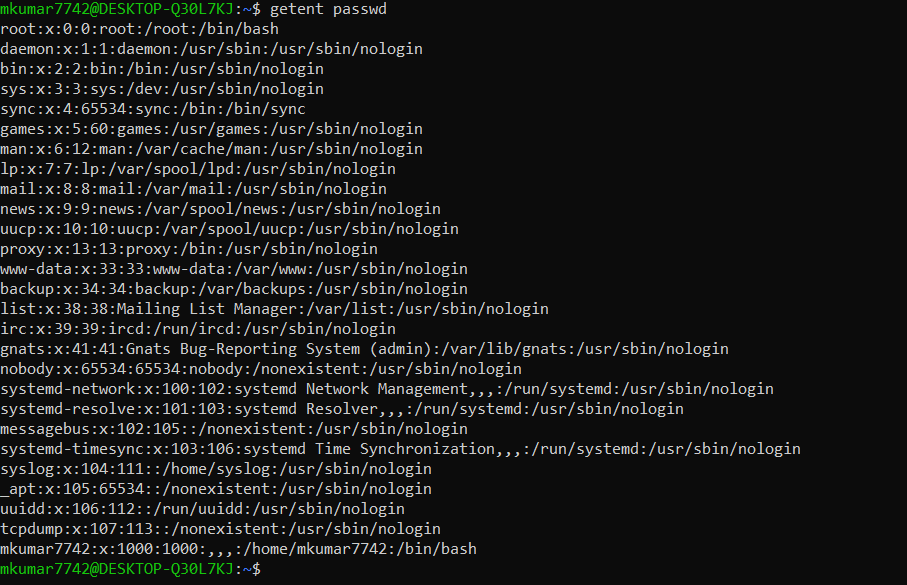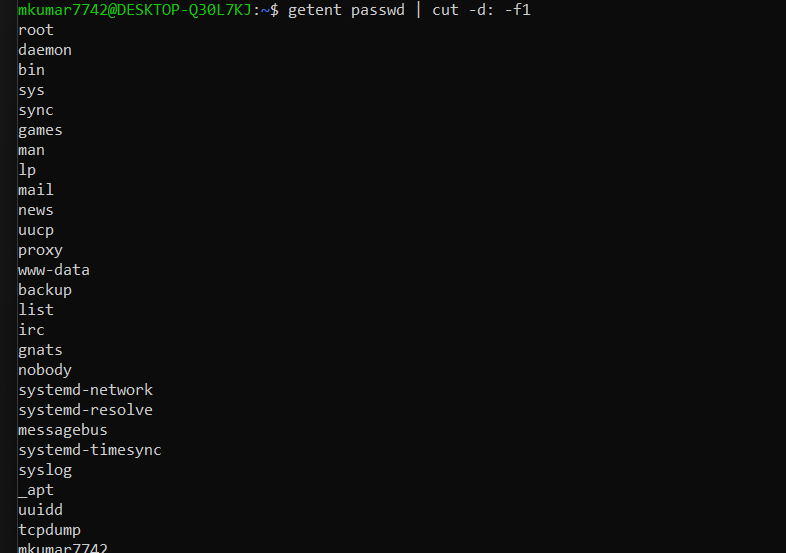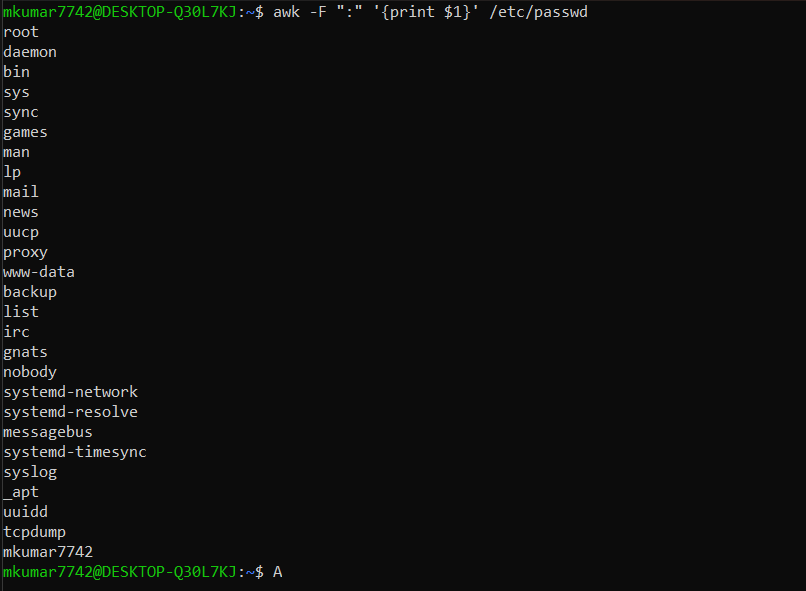In a Linux system, the concept of users plays a crucial role in managing access and permissions to various resources. It is essential to know how to list all the users in a Linux system to keep track of who has access to your system and what they can do with it. In this article, we will discuss various methods of listing users in Linux and what information each method provides.
List Users with the “cat” Command
The “cat” command is one of the simplest methods of listing users in Linux. This command displays the contents of a file, and in this case, the file we want to display is the “/etc/passwd” file. The “/etc/passwd” file contains information about all the users on the system, including their user names, user IDs, group IDs, home directories, and shell programs.
To list the users on the system using the “cat” command, open a terminal window and enter the following command:
cat /etc/passwd

Each line in the output represents a user on the system. The information is separated by colons (:) and includes:
- The user name
- The encrypted password (x indicates that the password is stored in the “/etc/shadow” file)
- The user ID (UID)
- The group ID (GID)
- The user’s full name or description
- The user’s home directory
- The user’s default shell
using the “cat” command is a simple and straightforward method of listing users in Linux. However, it might not be the best option for larger systems with many users, as the output can be difficult to read and does not provide any additional information about the users.
List Users with the “getent” Command
The “getent” command is another way to list users in Linux. This command retrieves entries from several system databases, including the “/etc/passwd” file. To list the users on the system using the “getent” command, enter the following command in the terminal:
getent passwd

The “getent” command retrieves entries from the “/etc/passwd” file and outputs the same information as the “cat” command. The information is separated by colons (:) and includes the user name, encrypted password, user ID, group ID, user’s full name or description, home directory, and default shell.
The “getent” command is another option for listing users in Linux, and it has the advantage of retrieving information from multiple system databases.
List Users with the “cut” Command
The “cut” command can be used in combination with the “cat” or “getent” command to extract specific information from the “/etc/passwd” file. For example, to list only the user names on the system, enter the following command in the terminal:
getent passwd | cut -d: -f1
The “cut” command is used to extract specific fields from the “/etc/passwd” file. In this case, the “-d” option specifies the delimiter as a colon (:), and the “-f” option specifies the field to extract, in this case, the first field, which is the user name.
List Users with the “less” Command
Another way to list users in Linux is to use the “less” command. The “less” command allows you to view the contents of a file in a paginated manner, which can be useful if the file is too long to fit on a single screen. To use the “less” command to list users, enter the following command:
less /etc/passwdThis will give you the same output as the “cat” command, but you can use the arrow keys to navigate the output, which can be helpful if the file is long.
List Users with the “awk” Command
The “awk” command is a powerful tool in Linux that can be used to process text data. You can use the “awk” command to extract specific information from the /etc/passwd file, such as the username or home directory. To list all users with the “awk” command, enter the following command:
awk -F ":" '{print $1}' /etc/passwd
This command uses the “awk” command to extract the first field (the username) from each line in the /etc/passwd file. The output will be a list of all the usernames on the system.
Check whether a user exists in the Linux system
To check whether a user exists in a Linux system, you can use the “id” command. This command is used to display information about a user, including the user’s username, user ID (UID), and primary group ID (GID).
Here’s an example of how to check if a user exists using the “id” command:
id <username>
Replace “<username>” with the name of the user you want to check.
Example:
id mkumar7742
The “id” command returns the user ID (UID), the primary group ID (GID), and the list of supplementary groups for the specified user. If the user exists, the “id” command will return information about that user.
If the user does not exist, the “id” command will return an error message:
id: mkumar7742: No such user
Conclusion
In this article, we discussed several methods of listing users in Linux, including the “cat” command, “less” command, “getent” command, and “awk” command. Each method provides a different way to list users and can be useful in different situations. With this knowledge, you should be able to list all users in your Linux system and manage access and permissions effectively.
Got questions or suggestions on the article? Don’t hesitate to leave a comment below. Your feedback is valuable to us and helps improve the content quality. And don’t forget to share this article with others who might find it useful. Looking forward to hearing from you!
If our tutorials helped you, please consider buying us a coffee. We appreciate your support!
Thank you for your support.



